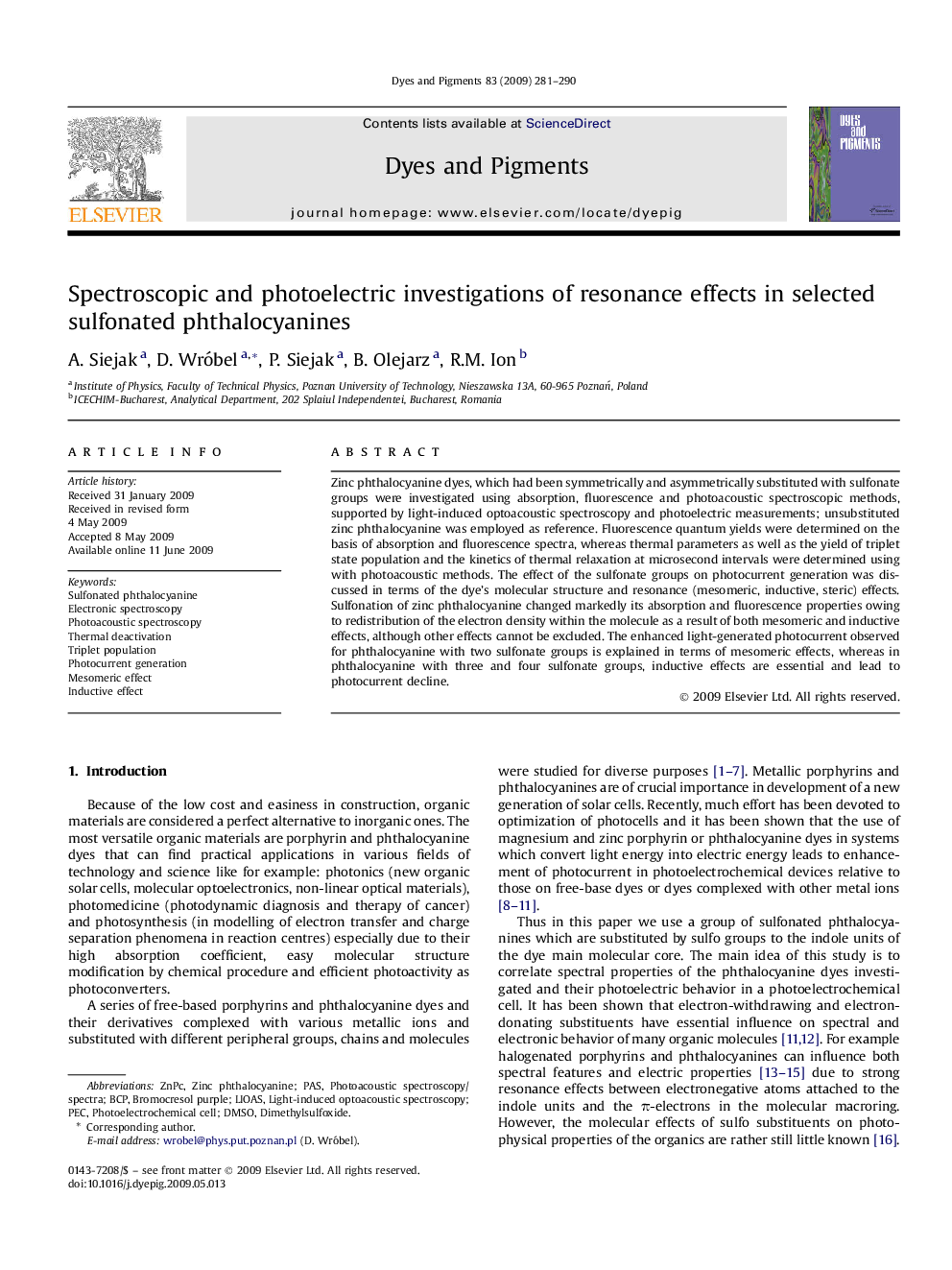| Article ID | Journal | Published Year | Pages | File Type |
|---|---|---|---|---|
| 177812 | Dyes and Pigments | 2009 | 10 Pages |
Zinc phthalocyanine dyes, which had been symmetrically and asymmetrically substituted with sulfonate groups were investigated using absorption, fluorescence and photoacoustic spectroscopic methods, supported by light-induced optoacoustic spectroscopy and photoelectric measurements; unsubstituted zinc phthalocyanine was employed as reference. Fluorescence quantum yields were determined on the basis of absorption and fluorescence spectra, whereas thermal parameters as well as the yield of triplet state population and the kinetics of thermal relaxation at microsecond intervals were determined using with photoacoustic methods. The effect of the sulfonate groups on photocurrent generation was discussed in terms of the dye's molecular structure and resonance (mesomeric, inductive, steric) effects. Sulfonation of zinc phthalocyanine changed markedly its absorption and fluorescence properties owing to redistribution of the electron density within the molecule as a result of both mesomeric and inductive effects, although other effects cannot be excluded. The enhanced light-generated photocurrent observed for phthalocyanine with two sulfonate groups is explained in terms of mesomeric effects, whereas in phthalocyanine with three and four sulfonate groups, inductive effects are essential and lead to photocurrent decline.
